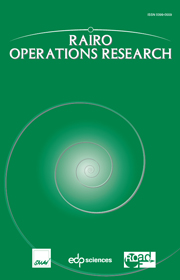Article contents
Design of a Participatory Decision Making Agent Architecture Based on Argumentation and Influence Function – Application to a Serious Game about Biodiversity Conservation
Published online by Cambridge University Press: 22 December 2010
Abstract
This paper addresses an ongoing experience in the design of an artificial agenttaking decisionsand combining them with the decisions taken by human agents.The context is a serious game research project,aimed at computer-based support for participatory management of protected areas(and more specifically national parks)in order to promote biodiversity conservation and social inclusion.Its objective isto help various stakeholders (e.g., environmentalist, tourism operator)to collectively understand conflict dynamicsandexplore negotiationstrategies for the management of parks.In this paper,after introducing the design of our serious game, named SimParc,we will describe the architecture of the decision making agent playing the role of the park manager.In the game, the park manager makes final decisions based on its own analysisand also on the votes of the stakeholders.It includes two modules:1) individual decision –based on a model of argumentation,which also provides a basis to justify and explain the decision;2) participatory decision –to take into account the preferences/votes from the stakeholders.
Keywords
Information
- Type
- Research Article
- Information
- Copyright
- © EDP Sciences, ROADEF, SMAI, 2010
References
- 9
- Cited by

